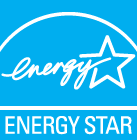More recently the meetings have concentrated on consultation with the industry and encouraging them to prepare submissions on MEPS or alternatives to be considered by DEWHA before being presented at the next meeting in September.
The Proposal
 Green ICT for the Australian Computer Society, and at the Australian National University, I was asked to speak at the 8 February 2008 Labelling Workshop on Computers and Monitors. The proposal under consideration was to make the US Energy Star Standard V4.0/V4.1 mandatory for computer and monitors sold from October 2009. There is a Fact Sheet and Technical Report available on the proposal.
Green ICT for the Australian Computer Society, and at the Australian National University, I was asked to speak at the 8 February 2008 Labelling Workshop on Computers and Monitors. The proposal under consideration was to make the US Energy Star Standard V4.0/V4.1 mandatory for computer and monitors sold from October 2009. There is a Fact Sheet and Technical Report available on the proposal.The new Minimum Energy Performance Standard would have applied to corporate, private and government computer purchases, with non-complying products being prohibited. Energy rating labels similar to those on consumer appliances would be attached to computers. Australian federal government agencies were already encouraged to purchase “Energy Star” standard computers (mandatory for US Government Agencies) under a 1997 policy on Measures for Improving Energy Efficiency in Commonwealth Operations.
The workshop covered the reasons for energy efficiency standards and labelling, why this should apply to ICT equipment, if the scheme should be voluntary or compulsory, how it could be implemented. A similar workshop had been held in 20 December 2007 on energy labelling for televisions.
At the computer meeting the consumer groups spoke generally in favour of the proposals, while the computer manufacturers had some concerns that a scheme designed for appliances would not be directly transferable to ICT equipment. Following the February 2008 meeting, I was asked by DEWHA to act as an independent consultant, collecting input from companies and propose an energy saving scheme in line with their views which would meet the government's objectives.
A further meeting was held with industry 29 July 2008 to discuss the issues of ICT energy efficiency. The general view of the meeting was that ICT products are internationally standardised and to introduce unique requirements for Australia would increase the cost to consumers and cause confusion. Australia should therefore not create its own unique energy labelling scheme for computer products. The emphasis should be on harmonised international standards and an introduction date of not earlier than April 2010.
Computer companies individually, in various non-profit initiatives and through formal national and international standards bodies have developed a number of initiatives for energy saving and customer awareness. My view is that it should be possible to build on these to provide a program of energy efficiency and consumer awareness for PCs.
Think Tank Report
The original concept was that I would prepare a report in conjunction with industry which would then be submitted to DEWHA. However, I have proposed to DEWHA, and they have accepted, that this be changed to an independent "think tank" style report. This will canvass input more widely and propose the possibility of an industry best practice or voluntary strategy, based on company, industry, national and international projects as models for possible wider industry engagement. It will draw on public source material about what the companies are doing, both domestically and internationally and propose to widen the operation of those successful company "pilot" projects as the basis for a complementary industry strategy.
This work is being funded by DEWHA, but will not necessarily represent DEWHA's views, nor that of any company or industry body. The report will inform the work of DEWHA will try to make some economy wide projections as to its greenhouse value of a voluntary programs as a basis for an Australian standard.
Other Areas to Be Investigated
Apart from areas relating to energy efficiency labelling and testing, other ways to encourage energy efficiency which might be fruitful to explore are:
- Standardised Energy requirements for government tenders, such as in the DEWHA Request for Tender for Provision of Desktop, LAN, Helpdesk and Midrange Services (RFT 0708-705 7 August 2008), with detailed environmental requirements.
- Energy Training for ICT Industry Staff: Such as the The Natural Edge Project's : Sustainable IT Lecture Series.
- Information for consumers and small business: on the benefits
of purchasing efficient computers. As these are computer based products, the web can be used as an information medium, in place of physical sticker on equipment and brochures. Companies currently provide information on their product offerings, but these can be difficult to interpret and compare. Industry and government can work to make the energy efficiency and other environmental information about products available in an easily interpreted format.
The ICT industry, researchers and others, are invited to provide input on how a voluntary scheme might work. Please note that his is a "desk exercise", involving a few days work, to produce a report of a few pages. It is not something on the scale of the Garnaut Climate Change Review or the Gershon Review of Government ICT.
The preferred method for input is by electronic mail to the address: pcmeps2(a)tomw.net.au>. Brief messages, with no attachments, citing publicly available web based sources are preferred: "Our company provides details of the energy rating of PCs sold at http://www ..." or "We have an energy saving scheme in Europe which could be introduced to Australia. See: http:/www...".
All input must be of a publicly usable nature. "Commercial in confidence" material cannot be used, as the final report is to be made public. I plan to have a draft report for DEWHA by 11 September 2008, so early input would be appreciated.
1 comment:
A preliminary draft report is available.
Post a Comment